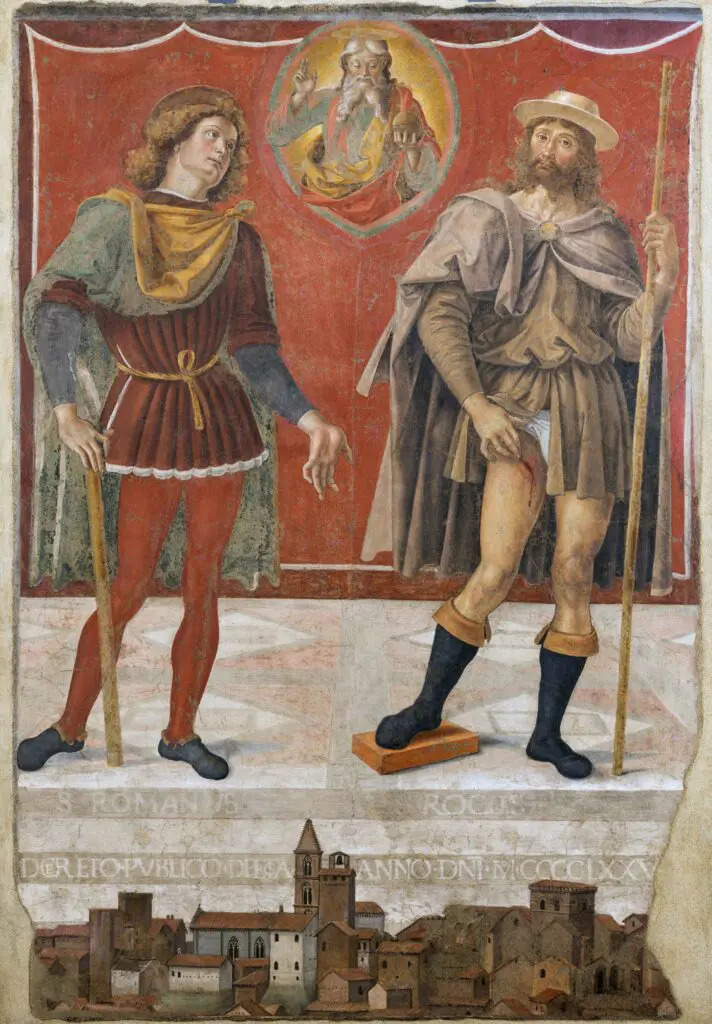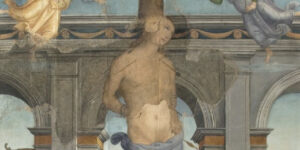“God the Father, and the Saints Roch and Roman”, a Perugino fresco in Deruta
God the Father, and the Saints Roch and Roman is a fresco painted by Perugino for the Church of Saint Francis in Deruta, near Perugia. The main characters in it are Saint Roch and Saint Roman, the former looking at God who appears above, inside an almond-shaped halo; the latter, dressed as a pilgrim, showing a wound in his thigh (a mark left by the plague). Both have a stick in their hand. The Saints, in elegant and well balanced poses, fill an ideal space defined by a geometrically decorated floor and a red drape hanging behind them.
The plague makes the date of the painting unclear
Below the two Saints, their names and an inscription can be read. According to the inscription, the painting was made in 1475, following a decree of the authorities. It is however possible that it was made after 1476, the year in which Deruta was actually hit by the plague. The fresco may in fact have been commissioned as an ex voto (a picture which thanks God or a Saint for granting a benefit) after the epidemic had ended.
The panorama of Deruta in the lower part of the fresco – shown by Saint Roman’s hand, and anyway easy to recognize from its buildings – seems to confirm the hypothesis, inasmuch as it would stress the Saints’ intercession for the faithful who lived there.
The fresco has been removed from its original place, and is currently on exhibition in the town’s Art Gallery (Pinacoteca).

Common traits with other Perugino works
This fresco has been termed “the primary cell of the Perugino language, that would then dominate everywhere” (P. Scarpellini, 1984). It stylistically recalls the Adoration of the Magi in the National Gallery of Umbria, Perugia, made about 1475 – namely one of the very first works carried out by the artist in Perugia after his years of apprenticeship in Florence.
Perugino’s fame would quickly reach Rome and the Pope, who would commission him to decorate the apse of the Chapel of the Conception in Saint Peter’s Basilica (the older building, dating back to Emperor Constantine) in 1479, and the side walls of the Sistine Chapel, together with Botticelli, Ghirlandaio, and Cosimo Rosselli, in 1481.









